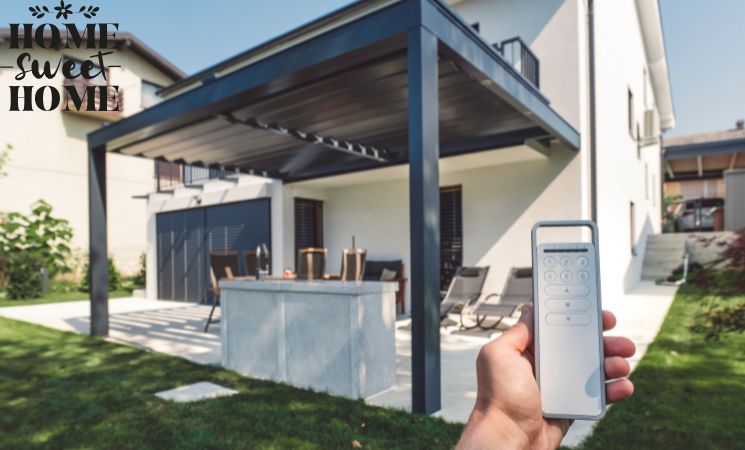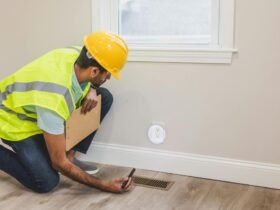As smart home technology continues to grow and evolve, more and more homeowners are discovering the convenience of controlling everything from their lights and thermostat to security systems and even kitchen appliances, all from the palm of their hand. Whether you’re adjusting the temperature, checking the security cameras, or scheduling your lights to turn on at specific times, smart home devices offer a level of comfort and convenience that was unimaginable just a few years ago. But with so many devices in one home, it’s important to have a strategy for managing and monitoring them efficiently. Let’s dive into how you can make the most of your smart home by staying in control of your devices, ensuring they work together smoothly, and keeping them secure.
The Importance of a Reliable Internet Connection
One of the first things you’ll need to keep your smart home running smoothly is a reliable internet connection. Since most smart devices are controlled through apps on your smartphone or other networked devices, having a strong internet connection is essential for making sure everything works properly. If your connection is slow or unreliable, you may experience delays when controlling devices, or some devices may not function at all. This is where fiber Wi-Fi comes in. Fiber-optic internet provides faster speeds and more stable connections than traditional broadband, ensuring that your smart home operates efficiently.
With fiber Wi-Fi, you can quickly adjust your thermostat, check your cameras, or manage your lights with little to no lag, even if you have several devices running at once. A high-speed connection also helps future-proof your smart home, as more advanced devices are introduced that require faster and more consistent internet to work seamlessly.
Understanding How Smart Home Devices Work Together
To make the most of your smart home, it’s important to understand how your devices interact with one another. Some devices, such as lights, thermostats, and locks, can be controlled via a single app, while others may require separate apps to operate. However, many modern smart home systems allow you to integrate devices from different manufacturers into a single ecosystem, often through platforms like Google Home, Amazon Alexa, or Apple HomeKit. This means you can control all your devices in one place, making your smart home easier to manage.
For instance, you can sync your thermostat with your security system, so your home adjusts its temperature when you leave or when you set the alarm. Or, you can program your lights to turn on automatically when your security system is activated. The more you integrate your devices, the smarter and more efficient your home becomes, saving you time and energy.
Creating Routines for Efficiency
One of the best ways to manage your smart home is by setting up routines or automations that run on their own. With the help of your smart home app or hub, you can schedule devices to turn on or off at specific times, or trigger actions based on certain conditions. For example, you can create a “Good Morning” routine that turns on the lights, adjusts the thermostat, and starts the coffee maker at the same time each morning. You can also program your home to go into “Away Mode” when you leave, automatically locking doors, turning off lights, and adjusting the thermostat to save energy.
These routines help to eliminate the need to manually adjust devices, and they can save both time and energy. You’ll also never have to worry about forgetting to turn something off before leaving the house again. The convenience of automating tasks makes your home more efficient, and the peace of mind knowing your home is secure and energy-conscious is a great bonus.
Monitoring and Securing Your Smart Home Devices
One of the most attractive features of smart home technology is the ability to monitor and control your devices remotely. Whether you’re away on vacation or just at work, you can use your smartphone to check the status of your smart devices. Want to see if you left the lights on? Or check the security cameras to see if everything’s okay at home? It’s all just a tap away.
However, with the increasing number of smart devices in our homes, it’s also important to keep them secure. Like any connected device, smart home gadgets can be vulnerable to hacking if not properly protected. The best way to secure your smart home is to ensure that each device is connected to a strong, encrypted network. Make sure to regularly update your devices’ firmware to patch any security holes and use strong, unique passwords for each device. Enabling two-factor authentication is another great way to add an extra layer of protection.
Another key aspect of smart home security is monitoring your internet connection. Since all your devices rely on Wi-Fi to function, it’s essential to have a secure and fast connection. Fiber Wi-Fi ensures that your devices are connected with minimal disruption and reduces the risk of interference or downtime, keeping your smart home secure and reliable.
Maintaining Your Smart Home System
Maintaining your smart home is just as important as setting it up. Regular maintenance ensures that everything continues to run smoothly and that you’re getting the most out of your devices. For starters, check the battery levels in your devices regularly—especially those in security systems, smoke detectors, and other critical areas. Many smart devices will send you notifications when the batteries are low, but it’s a good idea to get into the habit of checking them periodically.
Additionally, periodically review the settings and automations you’ve set up to make sure they’re still meeting your needs. As life changes—whether that’s a change in your work schedule, a new family member, or a new device—it’s important to tweak your routines to keep your smart home running efficiently. Also, don’t forget to update your apps and devices when new software versions are released. These updates often include bug fixes, performance improvements, and new features that can make your system even smarter.
The Power of Control at Your Fingertips
One of the most significant advantages of a smart home is the ability to control everything from a single device. Whether you’re using a dedicated smart home hub, an app on your phone, or a voice assistant, you have the power to manage your home right at your fingertips. No more walking to the thermostat to adjust the temperature, or checking the locks before you leave. Everything can be controlled from wherever you are, whenever you need.
This level of control is especially beneficial for busy people who are constantly on the go. With just a few taps, you can check the security of your home, adjust your lights, or even start your laundry. Having control over your devices makes your life more convenient, efficient, and secure.
Conclusion
Monitoring and managing your smart home devices doesn’t have to be overwhelming. With areliable fiber Wi-Fi connection, routine automation, and a strong focus on security, you can enjoy the convenience and benefits that smart home technology has to offer without the stress. Integrating your devices, automating tasks, and keeping everything secure will not only make your home more efficient but also provide peace of mind, knowing that everything is in check. The future of home management is here, and it’s all just a tap away!













